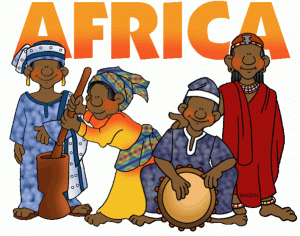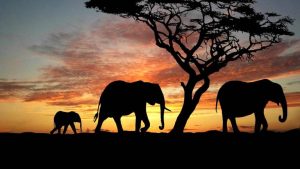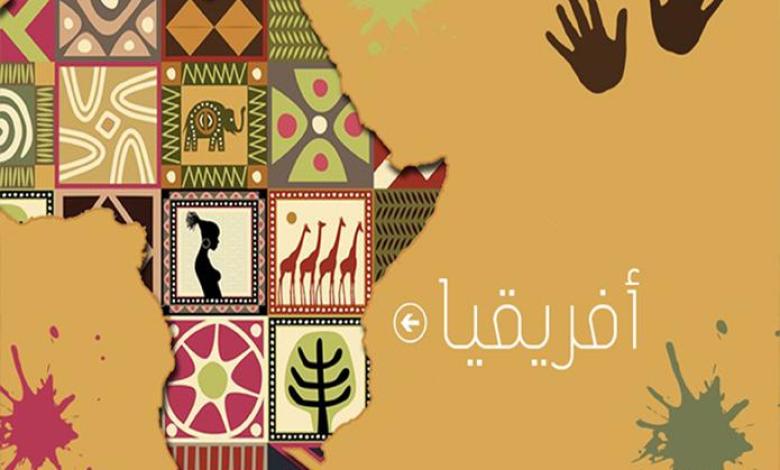About the continent of Africa
About the continent of Africa
Africa
Africa is the second largest continent in the world in terms of area and population, second only to Asia. Its area is 30.2 million square kilometers (11.7 million square miles), and this area includes the neighboring islands. It covers 6% of the total land surface area and occupies 20.4% of the total land area.
General information about the continent of Africa
The continent is bordered on the north by the Mediterranean Sea, by the Suez Canal and the Red Sea to the northeast, while the Indian Ocean is bordered on the southeast and east, and the Atlantic Ocean on the west. Other than the disputed area of Western Sahara, the continent includes 54 countries, including the island of Madagascar and several groups of islands such as the islands of the Comoros, which are considered annexed to the continent.
The equator passes through the continent of Africa, and it includes multiple climatic zones; It is the only continent that stretches from the temperate northern region to the southern temperate zone.

Culture and history
At the beginning of the Medieval Era, the continent of Africa was formed with the other continents of the Earth “Pangaya” or “Pangwana” (a supercontinent that existed in ancient times).
Africa and this supercontinent relatively participated in the unified group of animals that lived in that period of time, dominated by animals from the class of theropods, prosauropods and ornithischian dinosaurs, by the end of the Triassic period.
Late Triassic fossils have been found throughout Africa, but are more common in the south and north. The emergence of signs of extinction of events considers that the stages of life in Africa during this period of time have not been thoroughly studied. The classes belonging to the early Jurassic period are distributed in a manner similar to the classes of the late Trician period.

In addition to the more common outcrops in the south, and the less common fossil layers, which predominate through northward paths, over time during the Jurassic period, large and distinct groups of dinosaurs such as swaropods and ornithopods proliferated in Africa.
The strata of the Middle Jurassic period in Africa are not well represented or studied. The late Jurassic strata are also poorly represented, apart from the amazing tengguru group in Tanzania. The life of the Tandjuru animal is similar in the late Jurassic period
With the Tandjuru that was discovered in the Morrison Formation in the northwest of America. The island of Madagascar separated from Africa in the middle of the Mesozoic era about 150-160 million years ago, but it remained linked to India and the rest of the land in the Gondwanan continent. Madagascar includes fossils of abelisaurs and titansaurs. And then later, at the beginning of the Cretaceous period, slavery was practiced in Africa, as in other regions of the world, throughout recorded history.
Between the seventh and twentieth centuries, the Arab slave trade (also known as slavery in the East) brought in 18 million slaves from Africa across the Sahara and the Indian Ocean. And between the fifteenth and nineteenth centuries, the transatlantic slave trade brought in From seven to twelve million slaves to the New World.

The climate in Africa ranges from tropical climate to sub-polar climate at the highest mountain peaks. The northern part of the continent is mainly composed of desert and arid regions, while the central and southern regions alike are covered by savannah plains and dense jungles (heavy rain). In between this and that, there are medium areas, where patterns of plant life grow, such as the Sahel region, and the areas controlled by the plains.
Africa may include the world’s largest variety of wildlife in terms of density and diversity, and the wildlife variety includes large carnivores (such as a lion, hyena, and leopard) and herbivores (such as buffalo, deer, elephant, camel, and giraffe)
It lives and moves freely in open natural plains that are not owned by anyone. It is also the home of a variety of creatures that live in the forests (including snakes and species of monkeys), and it also includes creatures belonging to aquatic life (including crocodiles and amphibians)
1- Kenya: Masai Mara Reserve
This reserve is located in southern Kenya, and it is one of the best and most beautiful places in Africa, where safari trips and wildlife watching in its most beautiful pictures, and the reserve contains many beautiful landscapes as well as a distinct group of animals.
2- Zimbabwe: Victoria Falls
It is located in the south of the African continent, between Zambia and Zimbabwe, and tourists from all over the world go to it every year to enjoy the wonderful view of the waterfalls, and it is visited especially by fans of the sport of bungee jumping and the sport of small boats.
3- Egypt: the pyramids of Giza
It is one of the Seven Wonders of the World, located in the governorates of Giza, and the pyramids are the most important and most famous tombs in the world, as they were built as tombs that contain the bodies and mummies of a number of the kings of ancient Egypt, namely Khufu, Khafre and Menkaure.
4- Mali: Djenny
One of the largest cities in sub-Saharan Africa, it arose in the atmosphere of Islamic teachings, and the city includes a large mosque in the market square, a brick building made of clay, and this mosque was classified as the largest facility built of clay.
5- South Africa: Cape Town
This city is considered one of the most beautiful regions of the world, and against this background it attracts large numbers of tourists throughout the year, and it contains table mountain, which is the original home of many animal breeds, in addition to containing Christine Bush’s natural gardens.
